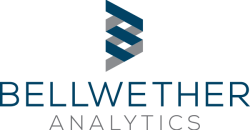How Objective Forecasting Can Change Everything
Years ago, I made the official transition from R&D engineering nerd to data geek. I had just begun one of my first jobs in strategic consulting. One of my first projects was to forecast a health care product central to the client’s portfolio.
At first, I assumed it would be a straightforward validation of what industry analysts had concluded – that the product would enjoy a multi-billion-dollar market within several years.
So, I jumped in: I scoured all the reports written by experienced industry analysts. Then, I dug into the actual data behind them. This entailed two things: The first step was to understand, as clearly as possible, what the product was being used for. This is a seemingly simple step, but absolutely central to fleshing out sound assumptions. The second step was to tease out the key parameters that would influence market size and adoption rate.
Finally, I built the model. Using one method, I sized the market. Then I used a second method. Then a third. To my surprise, no matter which method I used, I came to the same conclusion: the industry analysts were grossly overcalling the market.
I presented these data to my clients and made a recommendation to shift their strategy.
This recommendation fundamentally changed the way the company invested – and to great reward. Today, many years later, the market size remains at several hundred million (not several billion) dollars. In the end, their resources were better invested elsewhere.
The moral of the story? Sometimes we can get so close to the business – and so close to seeing the data the same way over and over – that it is not easy to be clear eyed about what the data are actually telling us. This is often not due to lack of competence or motivation (clearly, my colleagues and clients were astute, passionate business people), but rather, a human tendency to stick with old ways of seeing the same data.
To put it another way — A new, rigorous look at your data can change everything.
I carry this lesson with me every day. It is important to approach forecasting and other data problems by taking an independent, objective view. It is essential not to rely only on what others think. Finally, it is imperative to look at a situation from different angles before landing on a conclusion. It’s this type of discipline that we at Bellwether bring to the table, to help our clients make the soundest decisions possible.
It’s 5:30pm on a cold day last January. I’m “off the clock” and leaving an indoor golf facility after working on my game, in faded jeans, old sneakers, and a cruddy old t-shirt. My phone rings, and it’s a client. “Hey Clark, we’ve got an urgent problem!”
This is one of my favorite clients. (Well, the consultant in me would say they’re all my favorite clients!) We have a great working relationship. Earlier that day I sent a rough draft of a tool I was building, for feedback. The tool wasn’t “ready for launch” but this is how we work – we don’t hold back our work until a grand unveiling – we work collaboratively with our clients throughout the process, as we’ve learned having an honest back-and-forth leads to better results for everyone.
I say “sure, what’s going on?” while holding my breath (“We’ve got an urgent problem” are words you never want to hear as a consultant!)
“A deadline just changed – it turns out we need to use the tool to do some analysis by tomorrow morning! Can we use the tool you just sent?”
Tomorrow morning?! The tool is still in “rough draft mode” – it’s not ready yet! I hadn’t gotten feedback from the client, and we hadn’t sanity checked the tool. But still, they were in a bind, and I wanted to help. And coincidentally I was 5 minutes away from the client… without my computer… wearing faded jeans and a cruddy old t-shirt.
“Hey, I’m literally 5 minutes away – can I come over and we’ll do updates together in real time? And do you have a spare computer?” I ask.
“Really? Sure, that would be great!”
So I drive over to my client. I check in at the front desk, laughing at how I’m dressed. I’m pretty sure any “how to be a consultant” manual would tell you never to show up at a Fortune 100 company dressed in faded jeans and a cruddy t-shirt!
We get a computer and a conference room – I throw the model up on the screen. My clients and I work through the model, making changes and updating it in real time. It’s an amazing collaborative effort – my clients with tons of feedback, me updating it as they watch. It’s a frantic 90 minutes, but we get it done. In the end, the tool became “usable” for their needs for the next morning. Everything worked out great.
Why do I tell this story? Well, I do like the funny visual of “Partner of consulting firm shows up in jeans and t-shirt to fix a problem” but there’s something more – I think this really does show the ethos of Bellwether Analytics and our relationship with clients:
- When we have a collaborative working process, we can accomplish more
- We can be hugely flexible – while I can’t guarantee showing up at a company’s doorstep in 5 minutes every time there’s an emergency, we do go out of our way to help however we can
- We have a great working relationship with our clients. I’m not going to worry about stuff like how I’m dressed for an in-person meeting, neither are they – we’re just going to get the work done!


